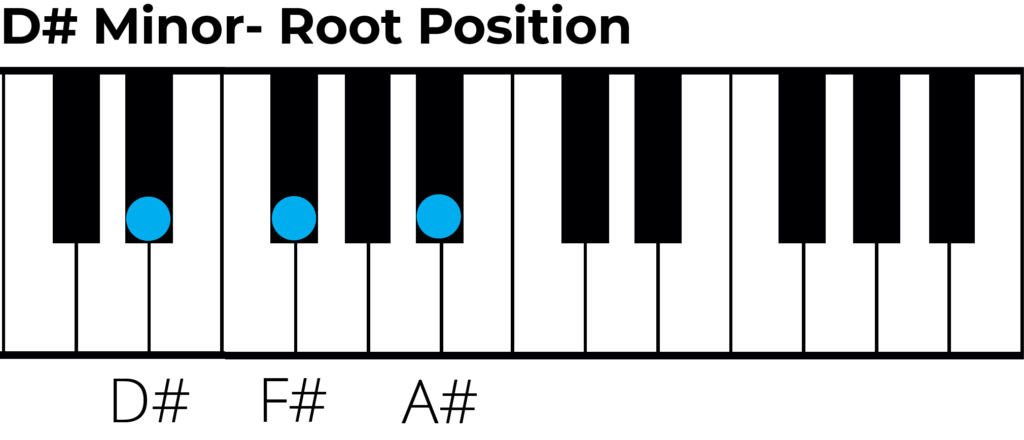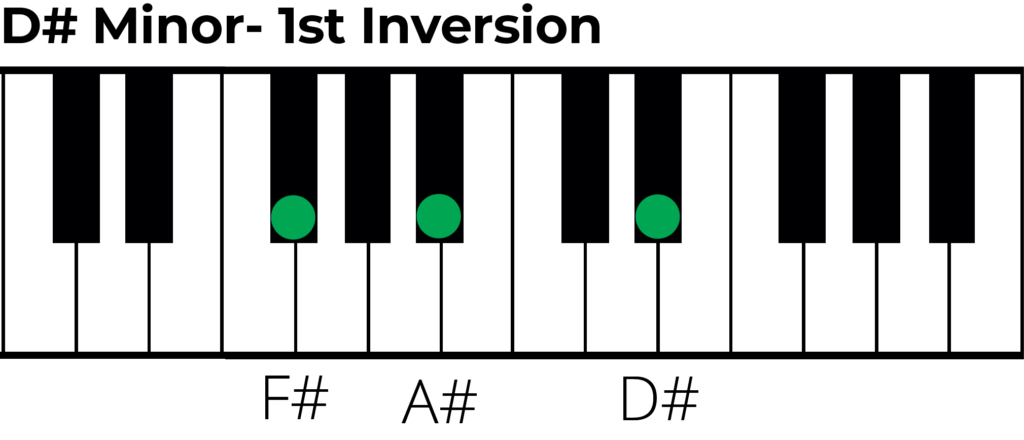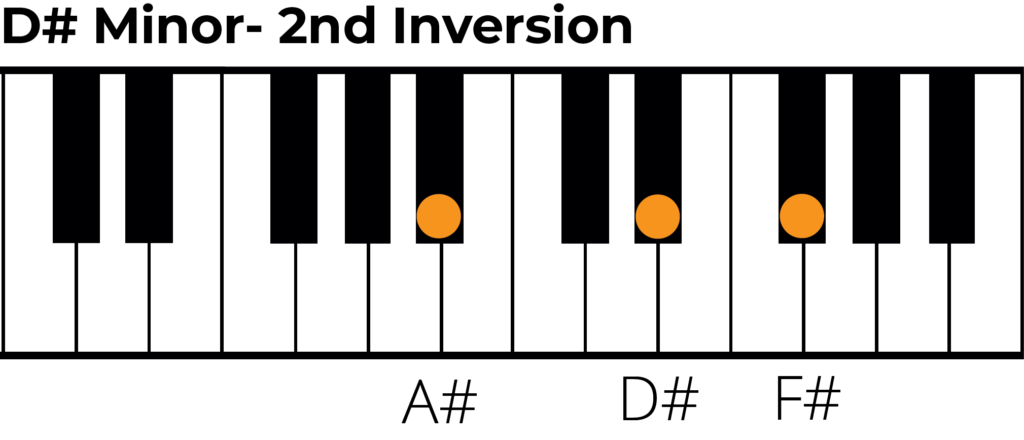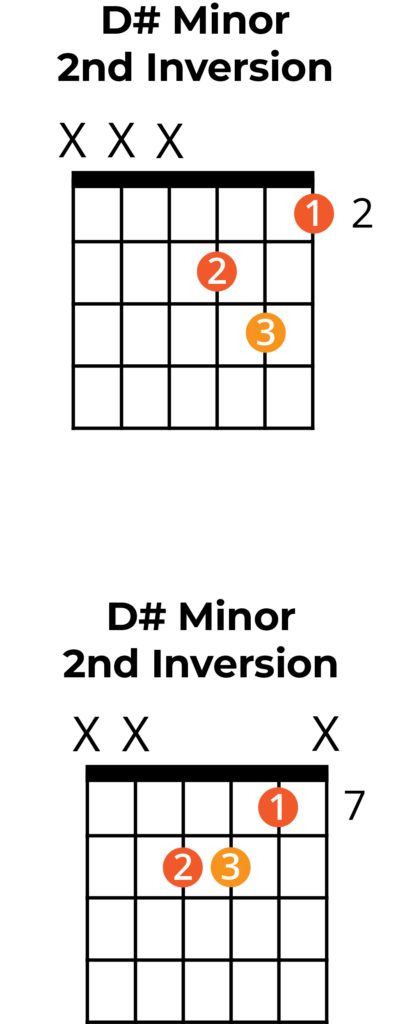In this article you’ll learn how to construct the D sharp minor triad as well as how to play it on piano and guitar.
We’ve also included sections on inversions for those that want a deeper understanding. Lastly, listen to some examples of popular songs that featured this triad.
Root, 3rd and 5th
The D sharp minor triad is formed of the 1st, flat 3rd and flat 5th of the D sharp major scale.
- D# – root note
- F# – minor 3rd above the root
- A# – perfect 5th above the root
Below is the D sharp minor triad shown in the treble and bass clef.


Before you read on make sure that you have a basic understanding of intervals. Intervals are vital for understanding how triads are built. Check out our guide to major, minor and perfect intervals for more on this.
D sharp Minor Triad on Piano
Below you can see how to play this triad on the keyboard or piano. This pattern of notes could also be played starting on any D sharp note.
However, the order of the notes must be the same:
- D sharp – lowest note
- F sharp – middle note
- A sharp – highest note
This is called ‘root position’.

D sharp Minor Triad on Guitar
There are two simple positions that you can use to play a D sharp minor chord on guitar. Both positions can also be slide up or down the neck to play different minor triads.

1st Inversion
A 1st inversion is where we take a triad but we start on the second note, which in this case is F sharp. We still keep the A# above, but then the D# (or root) become the highest note.
This way of rearranging a triad gives us a different sound as the relative pitches of the three notes has changed.
- F# – lowest note
- A# – middle note
- D# – highest note

1st inversion on Piano
On the piano we can play the 1st inversion of a D sharp Minor chord by starting on an F#. Then play the A# above and the D# above this.

1st Inversion on Guitar
Below are the most common shapes for playing a D sharp minor chord in the 1st inversion. Remember that we can only use certain shapes are the pitches of the three notes are important.

2nd Inversion
A 2nd inversion is where we take a triad but we start on the third note, which in this case is A sharp. We play the D# above this then the F sharp becomes the highest note in the chord.
- A# – perfect 5th (lowest note)
- D# – root note (middle note)
- F# – minor 3rd (highest note)
We could construct a 2nd inversion starting on any A# note in any octave. The only thing that must stay the same is that the we use the D# above and the F# above that.

2nd inversion on Piano
On the piano we can play the 2nd inversion of a D# Minor triad by starting on an A sharp. They play the D sharp above and the F sharp above this.

2nd Inversion on Guitar
Below are the most common shapes for playing a D# minor triad in the 2nd inversion. Remember that we can only use certain shapes are the pitches of the three notes are important.

Triads from the D sharp Minor Scale
By looking at the D sharp Minor scale we can actually make triads built on each note and only using notes from D sharp minor. Below you can see a list of each triad we will create be starting on different notes of the scale.
- D# Minor
- E# Dim
- F# Major
- G# Minor
- A# Minor
- B# Major
- C# Major

Famous Songs in D sharp Minor
Due to its slightly awkward key signature (6 sharps), pop pieces are rarely written in the key of D sharp Major. In the classical era, E flat Minor was preferred as it is easier to use for many brass and woodwind instruments.
This being said, some composers, such as Johann Sebastian Bach, Sergei Lyapunov, and Manuel Ponce did prefer to write in D-sharp minor.
Here are a few famous pieces in D sharp minor.
The Well-Tempered Clavier- Bach
In Bach’s ‘The Well-Tempered Clavier‘, the 8th fugue from Book 1 is in D sharp minor. (time – 4:12).
Alexander Scriabin’s- Etude Op. 8, No. 12
Alexander Scriabin’s ‘Etude Op. 8, No. 12’ is a captivating piano piece, celebrated for its intricate harmonies and expressive melodies, showcasing the composer’s mastery of late Romantic-era music.
Charles-Valentin Alkan – Op.33, Grande Sonate ‘Les Quatre Ages’
The second movement (time – 6:36) of this piece is in D sharp minor. The piece ends in F major and modulates through even stranger key signatures such as G sharp major and D sharp major.
What’s next….?
- Learn how to construct the D sharp Major triad
- Swat up on your chord knowledge with our complete guide to chords.
